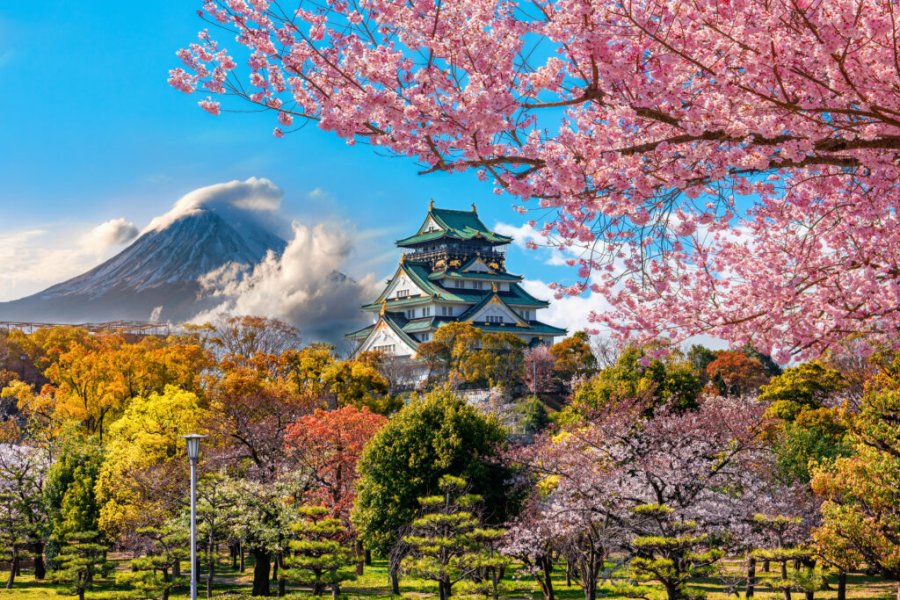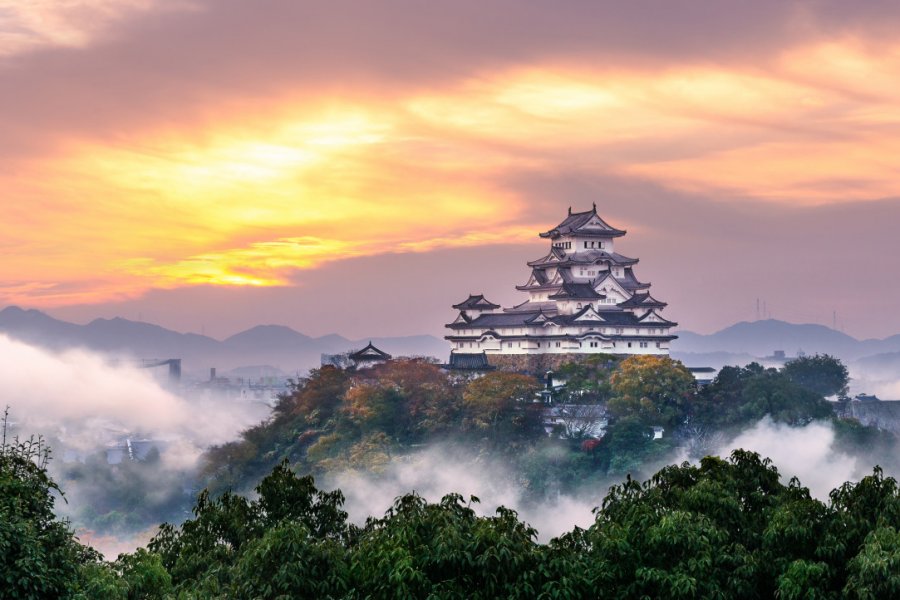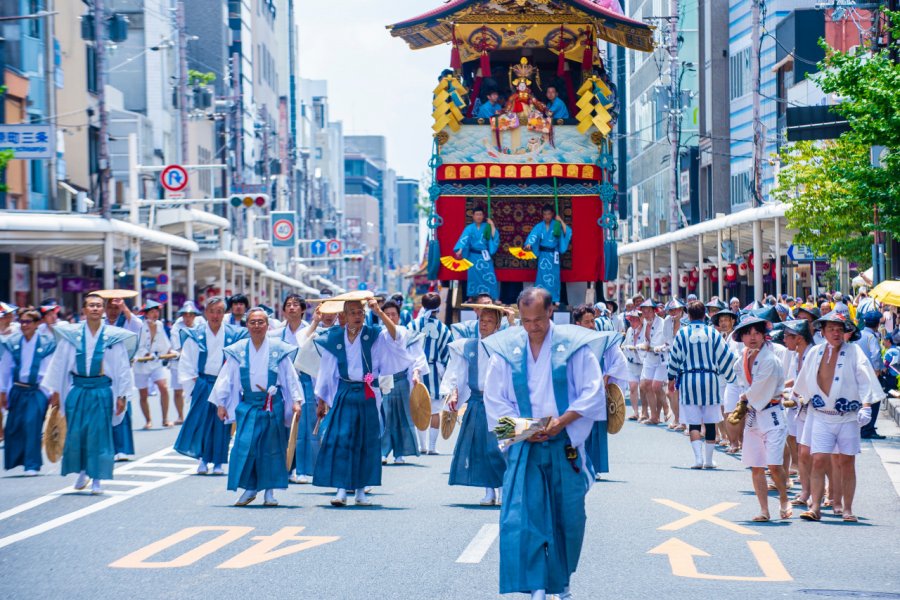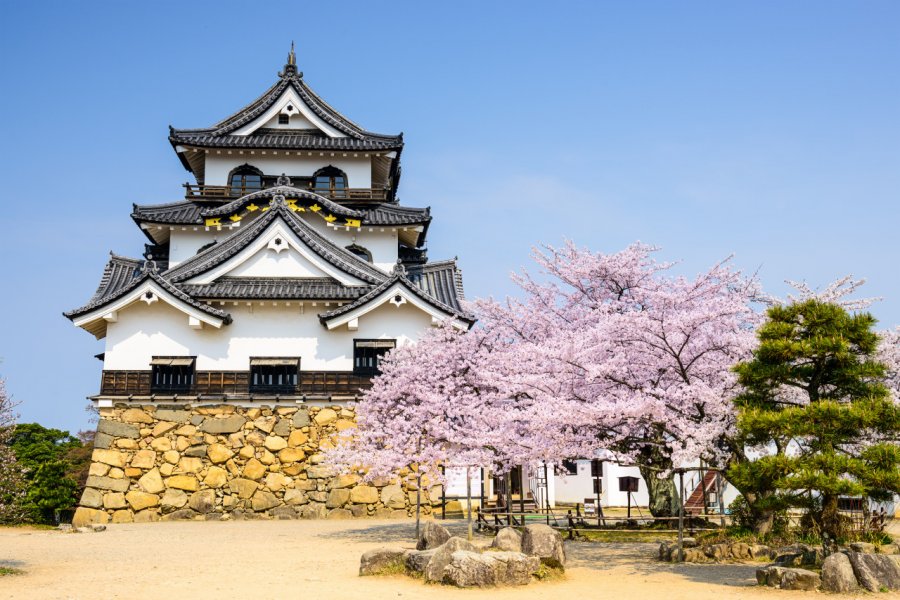Travel guide Kansai
What to see, what to do Kansai?
-
Book an activity
-
Customized travel
- The most beautiful cities Kansai
Suggested addresses Kansai
Travel Kansai
-
Find a hotel
-
Car Rental
-
-5% on travel insurance-15% off travel insurance
-
Find a local agency
Find unique Stay Offers with our Partners
Featured articles Kansai
Discover Kansai
When we think of Japan, many images, anchored in our collective universe, come to mind: samurai, Zen, Buddhism, ninja, manga, sushi... There are a thousand and one ways to enter Japanese culture, which fascinates and intrigues Westerners. To go to Kansai is to discover a fascinating history, to meet the many faces of the Japanese society, beyond all preconceived ideas, and to be carried away in a whirlwind of traditions. The history of the archipelago, relatively closed to foreign influences for nearly 300 years, has led to the emergence of a unique culture, whether artistic, culinary or social. Japanese concepts such as wabi-sabi or Zen never cease to question and intrigue. Going to Kansai is the perfect opportunity to grasp a bit of this culture, of which we give you some keys here.
Pictures and images Kansai
The 12 keywords Kansai
1. #shinto
The "way of the gods" is a set of ancient beliefs according to which the elements of nature are inhabited by kami, deities who are not always benevolent, in the image of nature. Shinto has long existed in symbiosis with Buddhism, but in the 19th century the two religions separated and Shinto became the state religion.
2. #wabi-sabi

An essential concept of Japanese aesthetics, wabi-sabi is composed of 2 terms: wabi or the fullness of simplicity and sabi : the feeling of facing the marks of passing time, of wear and tear. It is the art of perceiving the beauty of imperfect things, exemplified in the kintsugi technique: gluing together with gold the pieces of a broken object.
3. #wagyu
Meat of Japanese origin is called by this term. Their ancestor is the Tajima beef. The wagyū is a very marbled meat. We think, of course, of the beef from Kōbe in the first place, but some other wagyū from Kansai are just as delicious... and at a much more reasonable price, like the omi-gyū or the beef from Matsusaka.
4. #konbini
The mini-markets open 24/7 can be found on almost every street corner of the archipelago. They are convenient for buying a meal on the go, withdrawing money, going to the bathroom or even buying last-minute souvenirs. In the evening, they shine like beacons in the night around which partygoers gather.
5. #sakura

Who hasn't seen cherry blossoms on a brochure extolling the beauty of Japan? The sakura trees are inseparable from the archipelago and its magnificent spring. The trees are elegantly adorned in pink and white and we slip under their branches to celebrate the hanami. If you travel to Kansai in spring, you will see life in pink.
6. #matsuri
Festivals punctuate the Japanese year. Traditionally linked to the agricultural seasons, they are now organized by temples or shrines. There is a wide variety of festivals and those where an o-mikoshi is carried are very common. The richly decorated palanquin shelters the local deity during his tour of the district.
7. #mangas

Unavoidable in Japanese culture, manga are comic strips first published in magazines, which deal with all subjects and are aimed at all audiences. They are at the heart of an important industry, which is also supported by the sale of derivative products. The scale of the phenomenon goes far beyond the borders of Japan.
8. #toilettes
Access to clean toilets is easy in Japan. They are available in konbini's, train stations, shopping malls. Most of them are equipped with a real dashboard with water jet, music or seat heating options. In shopping malls, they are almost like beauty salons where women put on makeup or change their clothes.
9. #geta

The geta is a socque (a shoe with a wooden sole) with a particular shape. It is not uncommon to see Japanese people walking in geta in the alleys of spa towns. The sound of the wooden geta , which resounds on the pavement, is an ode to nostalgia. In Kinosaki Onsen, the geta ballet in the evening brings a touch of lyricism to the atmosphere.
10. #minimalism
The tidy fairy Marie Kondo may have been a bombshell abroad, but here she is an epiphenomenon, as the clean and tidy sector is saturated with stars who publish their advice. In a society of hyperconsumerism, minimalism drawing on values of simplicity inspired by Zen Buddhism is increasingly appealing.
11. #omotenashi
Developed in conjunction with the tea ceremony, the Japanese style of hospitality takes guest service to the level of an art form. Everything revolves around the customer who is served with care. From the saleswoman who wraps your shopping in tissue paper to the hotelier who carefully prepares futons for the night, omotenashi is seen throughout society.
12. #kawaii
The Japanese cultivate the art of the "kawaii", the cute, the harmless. In Hello Kitty's homeland, it is a form of artistic expression as much as a lucrative industry. People, animals or objects take on round and childlike features, and everything is dyed in fluorescent or pastel colours. Even the police have a mascot stamped kawaii.
You are from here, if...
You line up on subway platforms, trains and in front of restaurants.
Dressed in colourful yukata , you run to see the fireworks in summer.
The mask is your friend. You wear it when you have a cold, you're tired or you look bad... even if the coronavirus has been there.
You bow slightly to say thank you, hello orgoodbye .
You always have a small towel for sweat or to dry your hands.
Your shoes are easy to take off, always more practical for visiting temples and historical places.
You abuse sumimasen, "excuse me". It can mean please, sorry or thank you.
You stay on theright side of the Kyoto-style escalators, as opposed to Tokyo.
You enjoy your wagyū with a pinch of salt and a dash of wasabi.
You understand your interlocutor when he says " ōkini " (thank you).





































